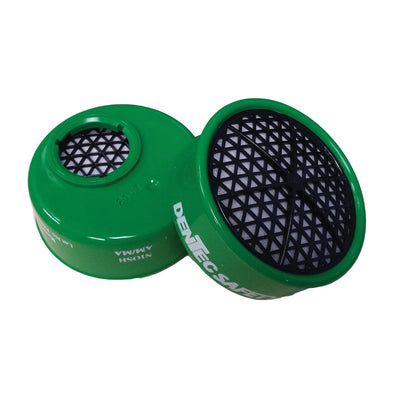Work Safely With Anhydrous Ammonia
Here are some key points.
- Anhydrous ammonia can quickly make its way into your eyes or lungs.
- Always wear personal protective equipment when working with anhydrous ammonia.
- Have an ample supply of water nearby.
Why anhydrous ammonia is dangerous
Anhydrous ammonia is a very hazardous chemical. It’s a liquid when stored under pressure, but it becomes a vapor when it’s released into the soil or air. Anhydrous ammonia contains no water. Instead, it seeks out moisture from the nearest source it can find if there is an accidental release. Unfortunately, that source is often a nearby person. Anhydrous ammonia can quickly make its way into your eyes or lungs. It can severely burn your skin. Inhaling anhydrous ammonia vapors can result in death.

Anhydrous ammonia contains no water. Instead, it seeks out moisture from the nearest source it can find if there is an accidental release.

Be sure to wear the right clothing and personal protective equipment.

Regularly inspect all hoses, valves and connections. Look for cracks, leaks and other wear and tear. But never run your hands across a hose in case there is a leak. Immediately report any problems to your supervisor.
Why anhydrous ammonia is dangerous
- Anhydrous ammonia is a very hazardous chemical.
- It’s a liquid when stored under pressure, but it becomes a vapor when it’s released into the soil or air.
- Anhydrous ammonia contains no water. Instead, it seeks out moisture from the nearest source it can find if there is an accidental release.
- Unfortunately, that source is often a nearby person.
- Anhydrous ammonia can quickly make its way into your eyes or lungs. It can severely burn your skin.
- Inhaling anhydrous ammonia vapors can result in death.
How to protect yourself
- Many anhydrous ammonia accidents occur because
people don’t take adequate safety precautions.
Warning: Don’t handle or transfer anhydrous ammonia unless you have been properly trained. - Be sure to wear the right clothing and personal protective
equipment. That should include:
- a full-face respirator with ammonia cartridges and prefilters
- lined rubber gloves
- a heavy, long-sleeved shirt
- long pants
- boots made of a nonabsorbent material – not leather or canvas
- It’s also a good idea to wear a chemical-resistant apron.
More anhydrous ammonia safety tips
- Always have an ample supply of water nearby. Keep at least five gallons of water in the supply tank, and carry a small squeeze bottle of water in your pocket. Keep a third container of water on your tractor.
- Don’t wear contact lenses.
- Never fill a nurse tank to more than 85 percent of capacity. Anhydrous ammonia expands as the temperature rises.
- Regularly inspect all hoses, valves and connections. Look for cracks, leaks and other wear and tear. But never run your hands across a hose in case there is a leak. Immediately report any problems to your supervisor.
- Stay away from all hose and valve openings.
- Never pick up a hose by the valve. Pick up the hose by the valve body.
- Be sure to bleed off the hose pressure before disconnecting it.
- Don’t try to repair a defective tank yourself.
- If you are transporting a tank on the roadway, make sure your tires, slow moving vehicle emblem and tank markings are in good condition.
If you are accidentally exposed
- Move away as quickly as you can from the source of the leak to reduce the amount of vapors you inhale.
- Yell for help. If someone responds, have the person call a doctor.
- Remove your clothes if anhydrous ammonia is on them so you can apply water directly to your skin.
- If your eyes or skin are exposed, immediately begin flushing the exposed areas with water. Don’t stop flushing for at least 20 minutes.
- Don’t force your eyelids open if they are frozen shut. Instead, flush them with water.
- If no water is immediately available, try flushing with cold coffee, soda, cold tea or milk until you can get to water.
- Get medical attention right away.
Anhydrous Ammonia Do’s and Don’ts
Do
- Wear the appropriate clothing and personal protective equipment when working with anhydrous ammonia.
- Keep at least five gallons of water in your supply tank and a small container of water in your pocket.
- Handle or transfer anhydrous ammonia unless you have been properly trained.
- Ever fill a nurse tank to more than 85 percent of capacity.
Cartridges & Respirators

3M 6000 Series Half Mask Respirator
When you’re ready to work safely, you’re ready to work. See our full line of safety supplies, including respirators, eye and ear protection, coveralls, first aid and more.









